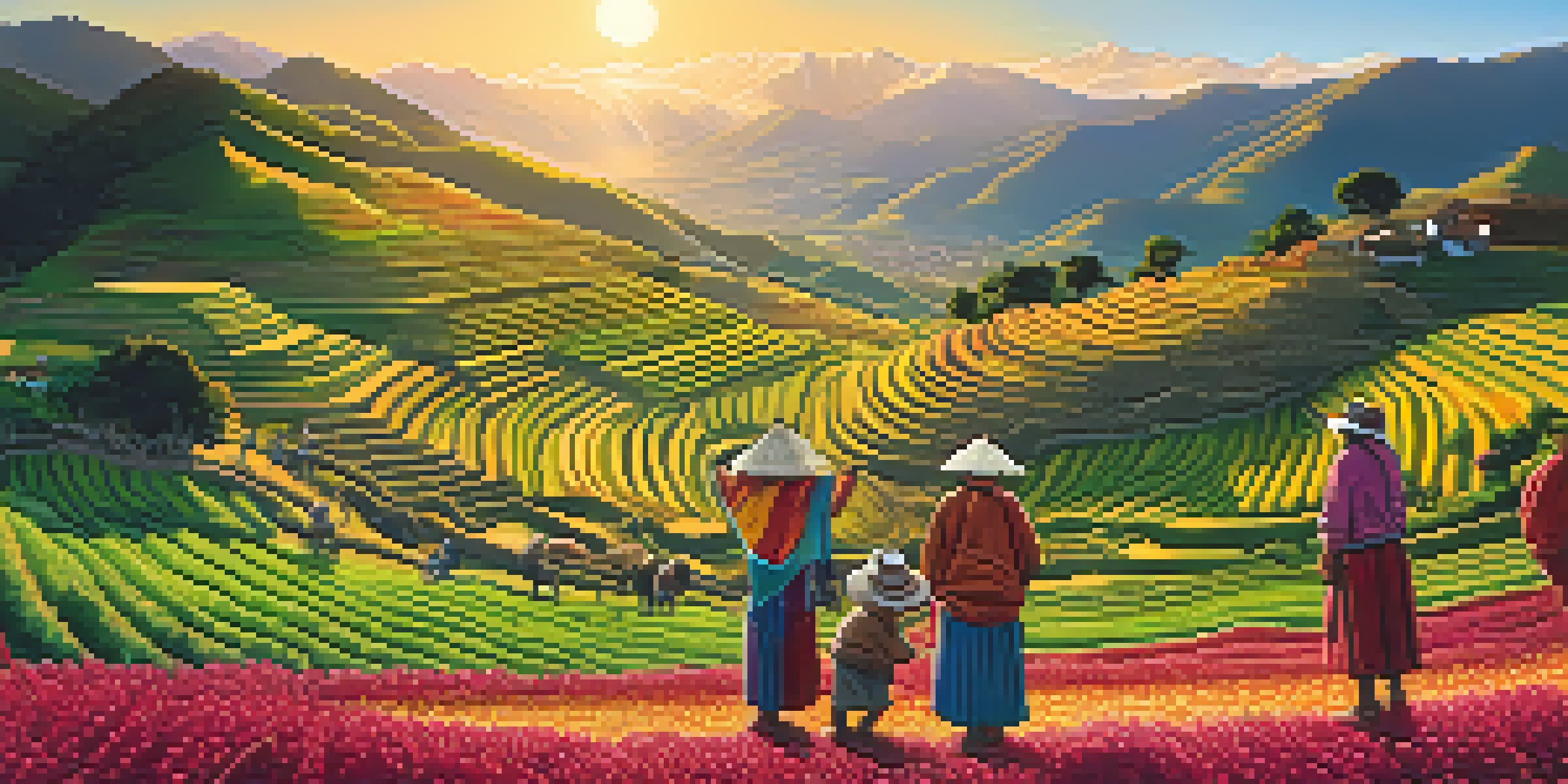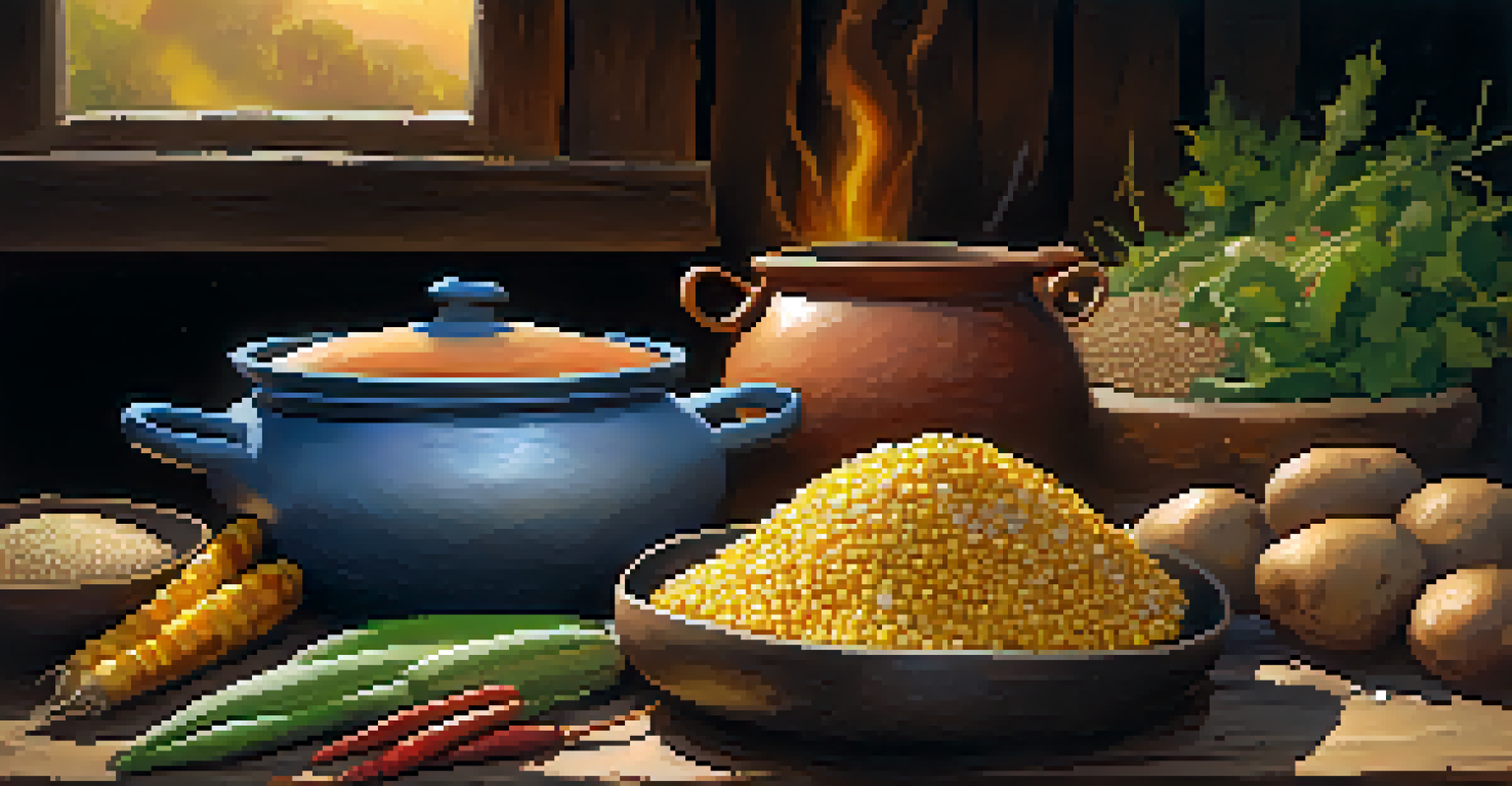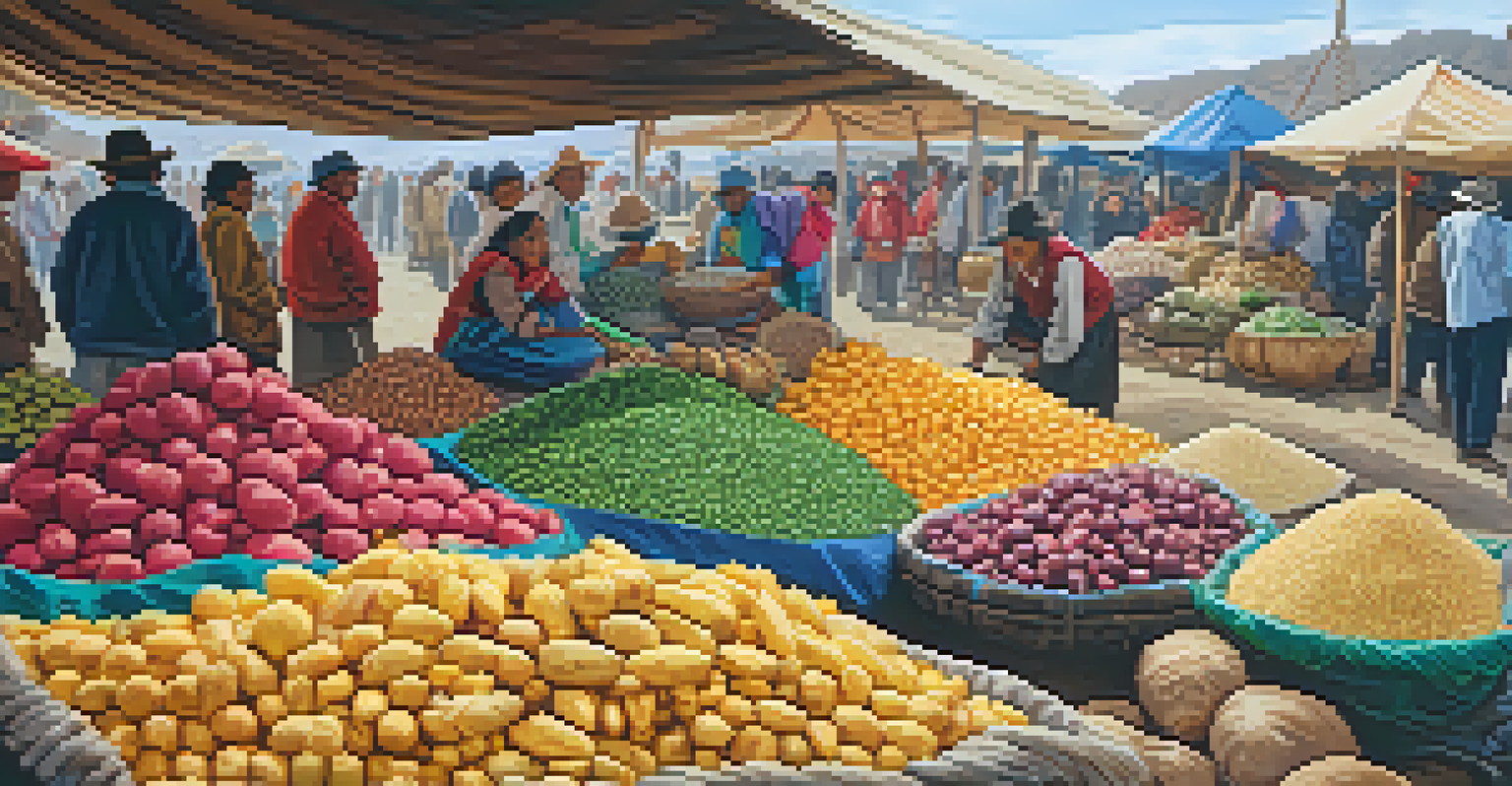The Role of Indigenous Agriculture in Peruvian Culinary Traditions

Understanding Indigenous Agriculture in Peru
Indigenous agriculture in Peru is rooted in ancient practices that have been honed over thousands of years. These methods emphasize sustainability and biodiversity, allowing various crops to thrive in different altitudes and climates. This agricultural wisdom has resulted in a rich tapestry of ingredients that form the backbone of Peruvian cuisine.
Agriculture is our wisest pursuit, because it will in the end contribute most to real wealth, good morals, and happiness.
The farmers, often referred to as 'campesinos,' cultivate a wide range of native crops, such as quinoa, potatoes, and various grains. Each of these crops carries its history and significance, contributing not just to local diets but also to cultural identity. By maintaining these agricultural traditions, they preserve a crucial part of Peru's heritage.
Moreover, the revival of ancient farming techniques has garnered global attention, especially as the world grapples with climate change. Indigenous practices promote resilience and adaptability, making them a model for sustainable agriculture that could benefit many communities worldwide.
Key Ingredients from Indigenous Agriculture
Peruvian cuisine is celebrated for its diversity and flavor, largely due to its indigenous ingredients. Staples like potato and corn, both of which have deep-rooted histories in the Andes, showcase this diversity. In fact, Peru is home to over 4,000 varieties of potatoes, each with unique flavors and textures that enrich various dishes.

Another significant ingredient is quinoa, often hailed as a superfood. This ancient grain is not only nutritious but also versatile, fitting seamlessly into both traditional and modern culinary creations. Its resurgence in global markets highlights the importance of indigenous crops in contemporary diets.
Rich Heritage of Indigenous Agriculture
Indigenous agriculture in Peru emphasizes sustainability and biodiversity, preserving vital crops and cultural identity.
These ingredients do more than just nourish; they tell stories of cultural resilience and adaptation. By incorporating these native foods into their dishes, chefs pay homage to the land and the communities that have nurtured these crops for generations.
Traditional Cooking Methods and Techniques
Indigenous cooking methods in Peru are as varied as the ingredients themselves. Techniques such as 'pachamanca,' which involves cooking food underground with hot stones, reflect a deep connection to the earth and its resources. This method not only infuses dishes with unique flavors but also brings people together in a communal cooking experience.
To forget how to dig the earth and to tend the soil is to forget ourselves.
Another traditional technique is the use of clay pots, which allow for slow cooking and enhance the richness of flavors. These methods have been passed down through generations, often accompanied by stories and rituals that strengthen community bonds. The culinary process, therefore, becomes a celebration of both food and culture.
Incorporating these traditional techniques into modern kitchens provides a way to honor indigenous heritage while creating innovative dishes. Chefs are increasingly embracing these methods, bringing a sense of authenticity and respect to their culinary creations.
Influence of Indigenous Agriculture on Modern Cuisine
Today, many chefs in Peru are blending indigenous agricultural practices with contemporary culinary techniques. This fusion creates dishes that are not only rooted in tradition but also appealing to modern palates. By using native ingredients in innovative ways, they elevate these foods to new culinary heights.
Restaurants across Peru are showcasing indigenous ingredients, often highlighting their nutritional benefits and rich flavors. This trend not only promotes local agriculture but also educates diners about the importance of native crops and their place in the culinary landscape. It's a delicious way to connect people with the land.
Culinary Fusion of Tradition and Modernity
Chefs in Peru are blending indigenous ingredients with contemporary techniques, creating innovative dishes that celebrate their heritage.
Moreover, this movement supports local farmers and encourages sustainable practices. By sourcing ingredients locally, chefs help to preserve traditional farming methods, ensuring that these practices continue to thrive for future generations.
Cultural Significance of Indigenous Ingredients
Indigenous ingredients in Peruvian cuisine carry profound cultural meanings. They are tied to the history, rituals, and traditions of various indigenous communities. For instance, certain crops are used in ceremonies that honor the earth and express gratitude for its bounty, underscoring the spiritual connection these communities have with their land.
Additionally, the preparation and sharing of food made from these ingredients can foster a sense of community and belonging. Family recipes that utilize native crops are often passed down through generations, serving as a link between the past and the present. This continuity is vital for preserving cultural identity.
As chefs and home cooks continue to explore and celebrate these ingredients, they help to keep these traditions alive. The act of cooking becomes a form of storytelling that honors the past while looking toward the future.
Challenges Facing Indigenous Agriculture Today
Despite its rich heritage, indigenous agriculture in Peru faces several challenges, including climate change, urbanization, and economic pressures. These factors threaten traditional farming practices and the biodiversity that comes with them. As the climate shifts, many farmers struggle to maintain their crops, requiring adaptations that can be difficult to implement.
Moreover, the younger generation is increasingly moving to urban areas in search of better opportunities, leading to a decline in traditional farming. This migration not only impacts the local economy but also risks losing valuable agricultural knowledge and practices. Without support, these traditions may fade away.
Challenges and Future Opportunities
While facing climate change and urbanization, there is potential for indigenous agricultural practices to gain recognition and support globally.
Efforts are underway to address these challenges through education and sustainable practices. Organizations are working to empower local farmers, ensuring they have the resources and knowledge needed to thrive in a changing world while preserving their cultural heritage.
The Future of Indigenous Agriculture in Peru
Looking ahead, the future of indigenous agriculture in Peru holds both challenges and opportunities. With an increasing global interest in sustainability and organic farming, there is potential for indigenous practices to gain recognition and support. This could revitalize local economies and encourage the preservation of traditional methods.
Moreover, as consumers become more conscious of where their food comes from, there’s a growing appreciation for indigenous ingredients. This trend can lead to greater demand for native crops, benefiting farmers and encouraging the continued cultivation of these vital resources.

Ultimately, the future of indigenous agriculture is intertwined with the preservation of cultural identity and culinary diversity. By valuing and supporting these practices, we can ensure that Peru's rich agricultural heritage continues to thrive, nourishing both the land and its people for generations to come.